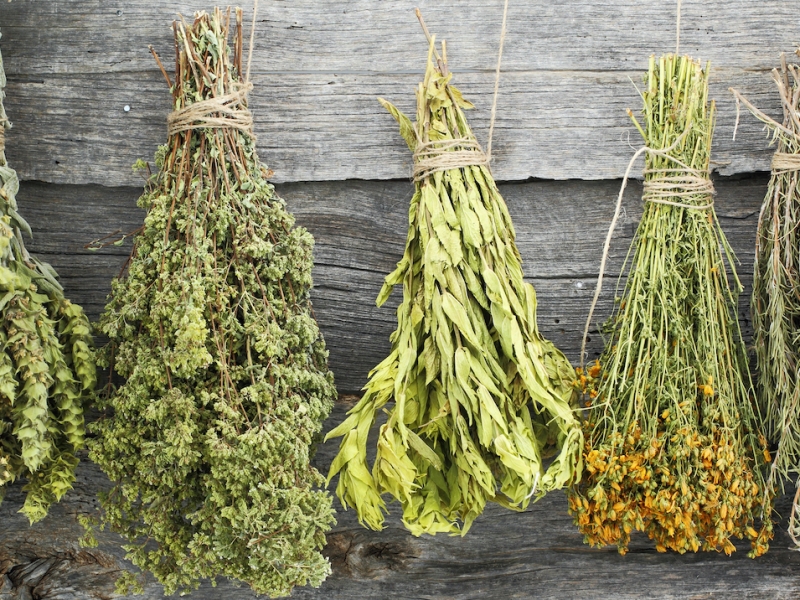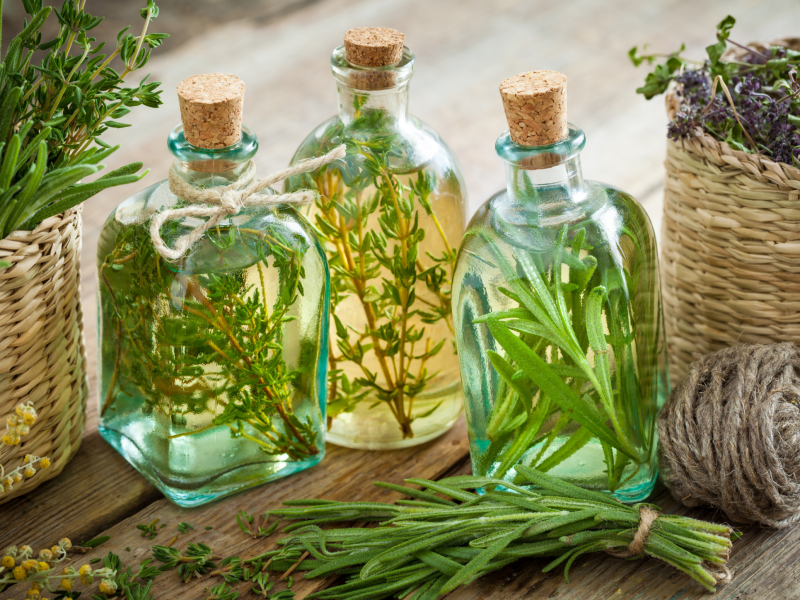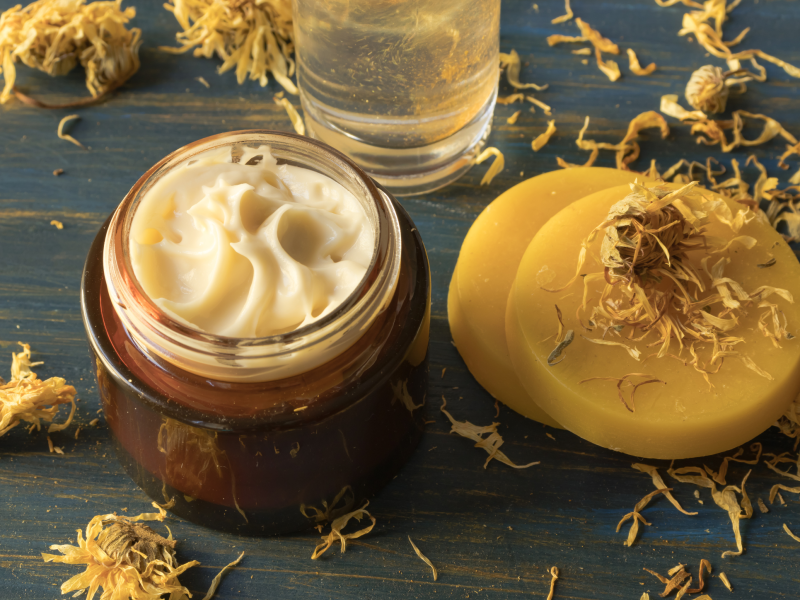How to make an infused massage oil
What are infused oils?
Infused oils are carrier oils that have been steeped with herbs, flowers, or other plant materials so that the oil absorbs their beneficial properties, flavours, or aromas. They can be made for culinary use (such as oregano-infused olive oil) or for external use on the skin (such as St John’s wort or calendula-infused oils).
This guide focuses on massage and skincare oils. If you’re interested in making oils for use in the kitchen, check out our separate guide on how to make infused culinary oils. Both use similar infusion methods, but the intended use and safety considerations differ.
What are infused massage oils used for?
Infused massage oils are wonderfully versatile. They can be massaged into the skin to ease tension, soothe sore muscles, and support relaxation. Many are also used to nourish dry or irritated skin, helping to calm redness and restore suppleness.
Certain infused oils, such as arnica or St John’s wort, are traditionally applied after bumps, bruises, or muscle strains to support the skin’s natural repair processes. Others, like calendula, are valued for their gentle, skin-soothing properties and are especially helpful for sensitive or delicate skin.
In addition to being used on their own, infused massage oils also form the base for homemade salves, balms, and creams, extending their healing benefits into a wide range of natural skincare and first-aid remedies. See our blog posts on how to make herbal salves and how to make herbal creams for more details.
Which herbs can I use to make an infused massage oil?
Below are some of our favourite herbs for making infused massage oils. You can explore a longer list of herbs recommended for salves on our seed pack page by using the ‘make your own’ filter and choosing ‘massage oils’.
-
Arnica, Meadow
Price range: £3.25 through £4.00 Inc VAT -
Calendula
£2.75 Inc VAT -
Chamomile, Roman
£2.75 Inc VAT -
Lavender, English
£2.75 Inc VAT -
St John’s Wort
Price range: £2.50 through £9.00 Inc VAT -
Yarrow
£2.75 Inc VAT
How do I make an infused massage oil?
There are various different ways to make infused massage oils. Below is a summary of the two most commonly used methods:
1. Slow, Cool Infusion
This gentle method uses time rather than heat to draw out the qualities of the herbs. Fresh or dried plant material is covered with oil and left to infuse for several weeks, usually in a warm spot, protected from temperature swings and direct sunlight. Cold infusions preserve delicate, volatile compounds and give a subtle, well-rounded extract.
Cold infusion can be done very simply by just covering the herbs with oil, or it can be approached more precisely, using measured proportions of herb to oil. The ratios vary depending on the species and plant parts, since leaves, flowers, roots, and barks all release their properties differently. This is a big subject and too much for us to cover here, but if you are interested in exploring it in more detail, we can recommend an online course run by Kami McBride called Handcrafting Healing Herbal Oils.
2. Warm, Quick Infusion
By applying gentle heat, the herbs release their properties into the oil much more quickly. The jar or pan is kept warm for several hours to a few days, depending on the method. This approach is useful when you need an oil in a shorter time, or when working with tougher plant material, though care is taken to avoid overheating, which can damage the oil or herbs.
Should I Use Fresh or Dried Herbs to Make an Infused Massage Oil?
Both fresh and dried herbs can be used to make infused oils, but different plants lend themselves better to one or the other. Herbs such as arnica and St John’s wort are often infused fresh because their healing compounds are most active and abundant straight after harvest; St John’s wort in particular releases its deep red pigment best from fresh flowering tops. In contrast, herbs like calendula or lavender are usually infused dry. Their petals and flowers are light and resinous, and once dried they release their constituents easily into oil without the complications of added moisture.
The main risk with fresh herbs is their high water content, which can introduce moisture into the oil and encourage mould or spoilage. To minimise this, harvest on a dry day, gently shake off insects, and allow the plant material to wilt or air-dry for several hours before infusing. Always use the slow, cold method for fresh herbs — heating them encourages water to leach into the oil, increasing the chance of fermentation or rancidity. For this reason, fresh herbs are not recommended for the quick, warm bain-marie method, which works best with dried herbs that are already free of moisture.
Recipe 1: Calendula Oil (Dried Petals, Quick Warm Infusion)
Prep Time
15 mins
Infusion Time
2-3 hours
Ingredients
- Dried calendula petals
- Organic oil (olive, sunflower, sesame, jojoba, or almond all work well)
Many recipes suggest a 1:5 ratio (e.g. 10g petals to 50ml oil), but in reality dried calendula petals are so light and bulky that this proportion rarely works. A more practical approach is to use as much oil as is required to cover the petals, or to gradually add the petals to the oil, ensuring they are mostly submerged. We have found that 10g of dried petals is a suitable amount for 200ml oil.
Equipment
- Heatproof jar or bowl
- Bain-marie/double boiler
- Food thermometer if available
- Fine strainer or muslin cloth
- Bowl or jug for straining
- Funnel (optional, for easy pouring)
- Dark glass bottle for storage
- Pen and label
Method
- Add the petals into a heat-proof bowl and pour over the oil, ensuring the petals are more or less submerged by the oil. If you’re not sure if you have enough oil, start the other way round, adding the oil first, then the petals.
- Set the jar or bowl into a bain-marie/double boiler.
- Warm gently for 2–3 hours, keeping the oil between 40–50 °C (warm to the touch, never hot), stirring occasionally to submerge the petals if required.
- Allow the oil to cool slightly before straining.
- Strain the oil through a fine strainer or muslin cloth into a clean bowl or jug, pressing gently to extract as much oil as possible.
- (Optional) Strain a second time or let the oil settle and decant the clear portion.
- Transfer into a dark glass bottle, label with contents and date, and store in a cool, dark place.
Storage & Use
- Use within 6–12 months for best quality.
- Apply to sore muscles, joints, or dry skin. Avoid broken skin and sensitive areas. Patch test before first use.
Usage
- Massage a small amount into bruises, sore muscles, or bumps.
- Do not apply to broken skin, near eyes, or on mucous membranes.
- Always patch test before first use to check for sensitivity.
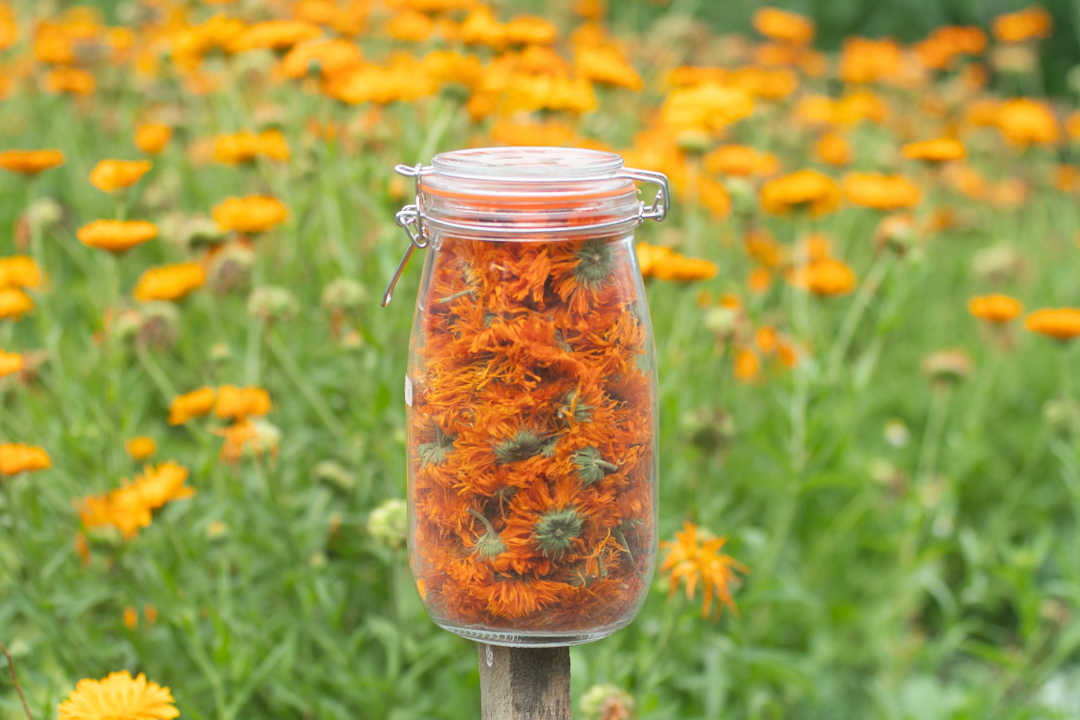
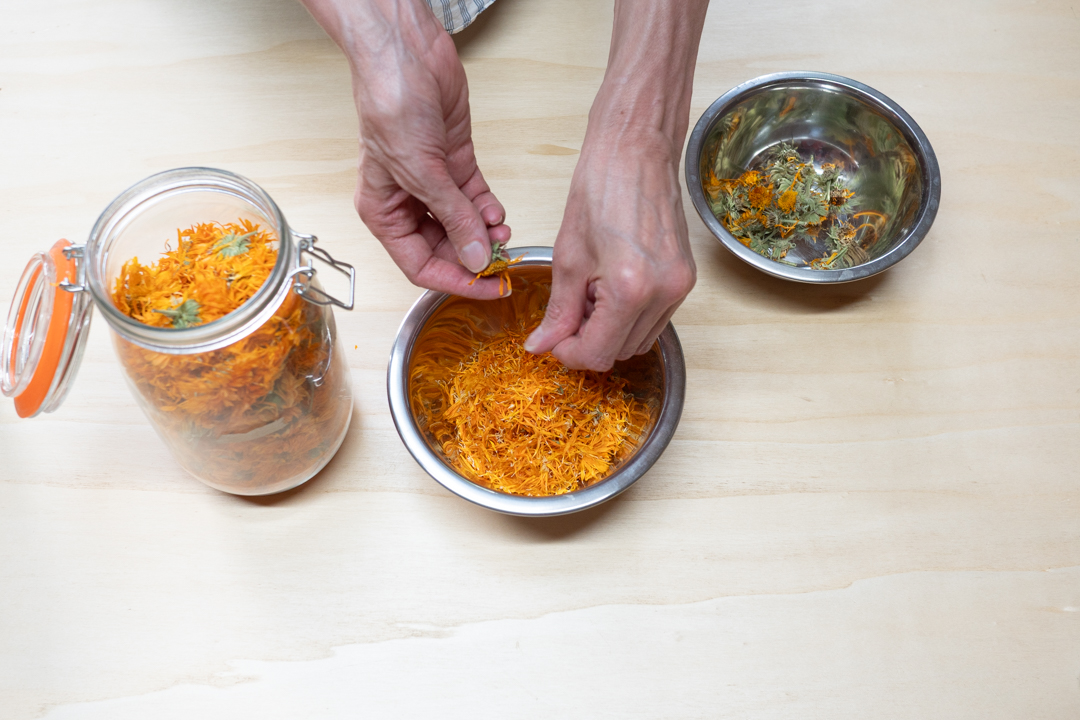
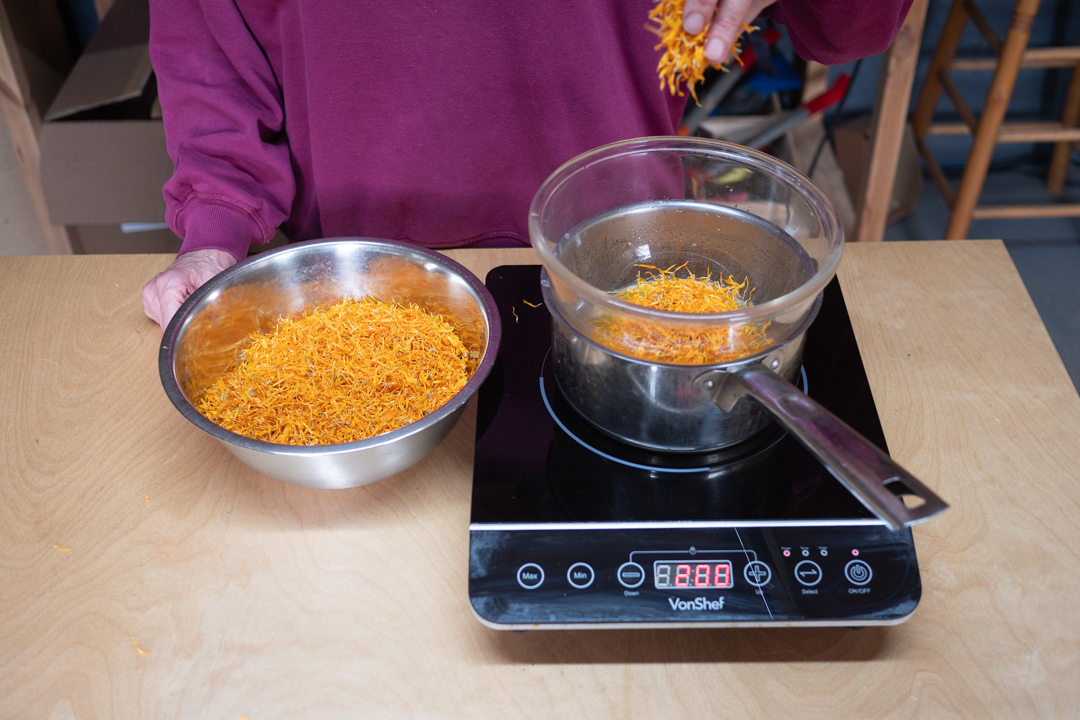
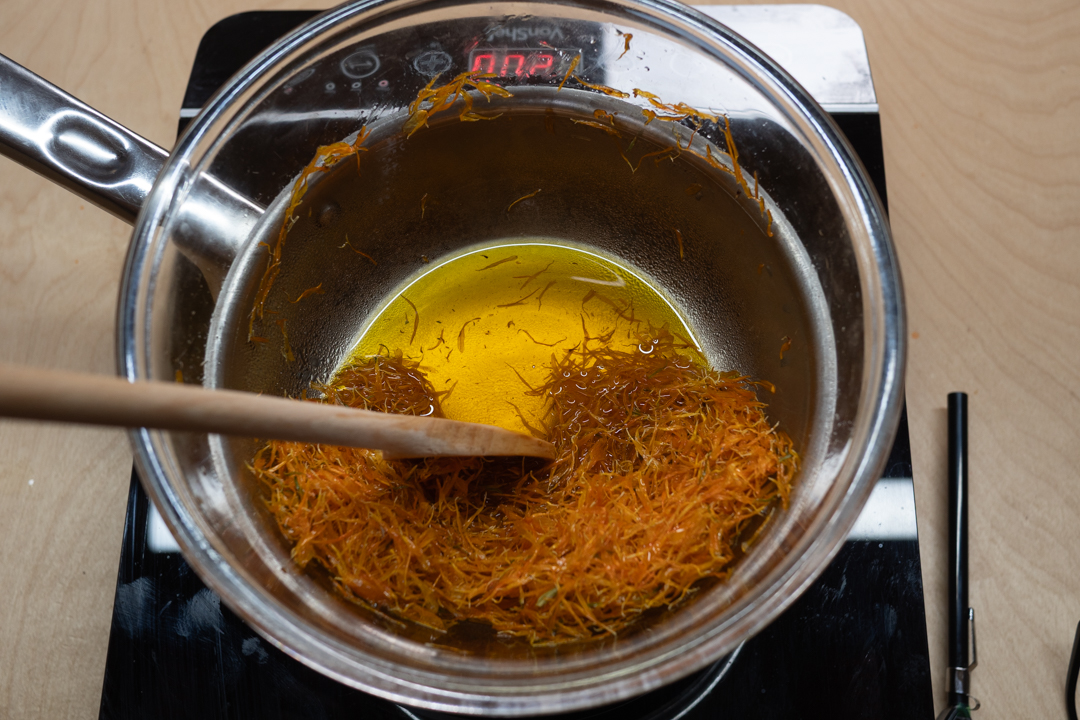
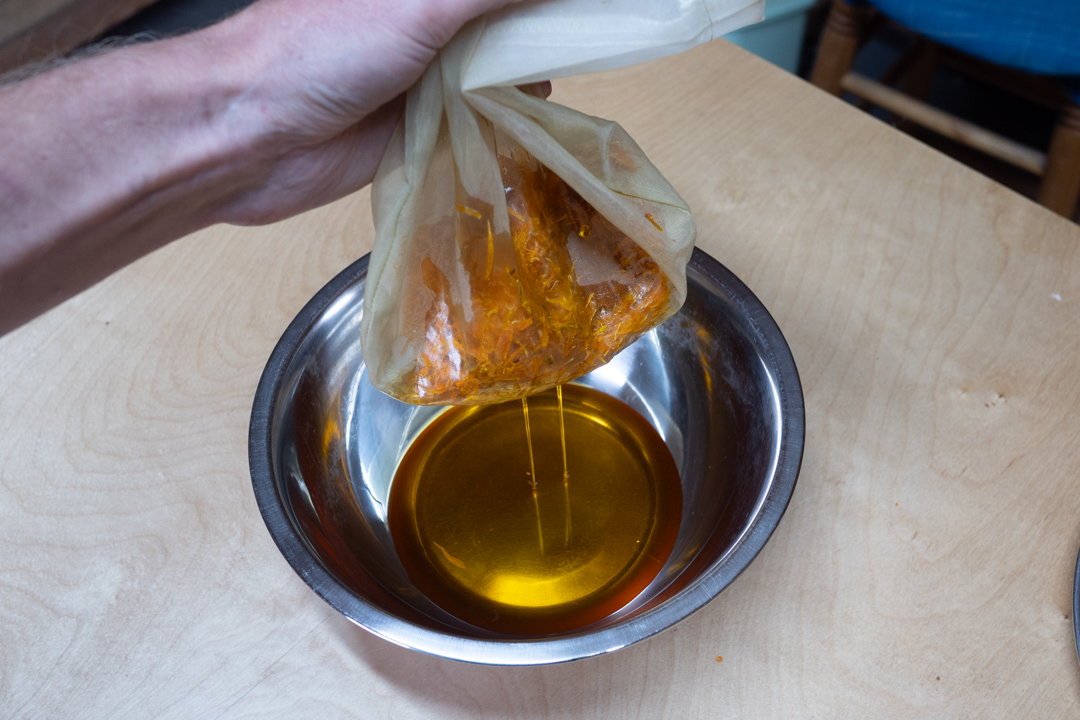
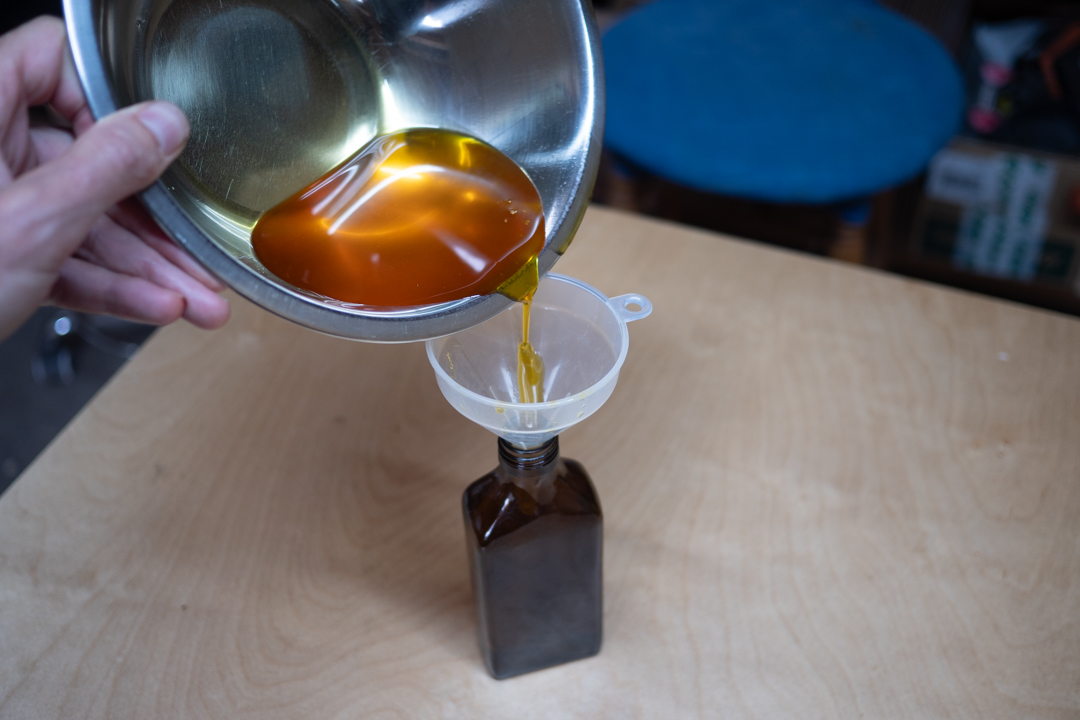
Recipe 2: Arnica Oil (Fresh Flowers, Slow Cold Infusion)
Prep Time
30 mins
Infusion Time
2-3 weeks
Ingredients
- Fresh arnica flower heads (petals, sepals, and receptacle), enough to loosely fill your jar
- Organic oil (olive, sesame, sunflower, jojoba, or almond) — enough to fully submerge the flowers
Equipment
- Clean, dry jar with a lid
- Pen and label
- Fine strainer or muslin cloth
- Bowl or jug for straining
- Funnel (optional, for easy pouring)
- Dark glass bottle for storage
Method
- Harvest fresh arnica flowers on a dry day. Remove any insects or browned petals.
- Place the prepared flower heads in a clean jar.
- Pour in enough oil to completely cover the flowers.
- Seal the jar and label with contents and date.
- Store in a warm, dark spot for 2–3 weeks. Shake gently once a day to help the infusion.
- After 2–3 weeks, strain the oil through a fine strainer or muslin cloth into a clean bowl or jug, pressing gently to extract as much oil as possible.
- (Optional) Strain a second time or let the oil sit 24 hours and decant the clear portion.
- Transfer the finished oil into a dark glass bottle using a funnel if needed, and label with contents and date.
Storage & Use
- Store in a cool, dark place and use within 6–12 months.
- Massage gently into bruises, sore muscles, or bumps. Avoid broken skin and sensitive areas. Always patch test first.
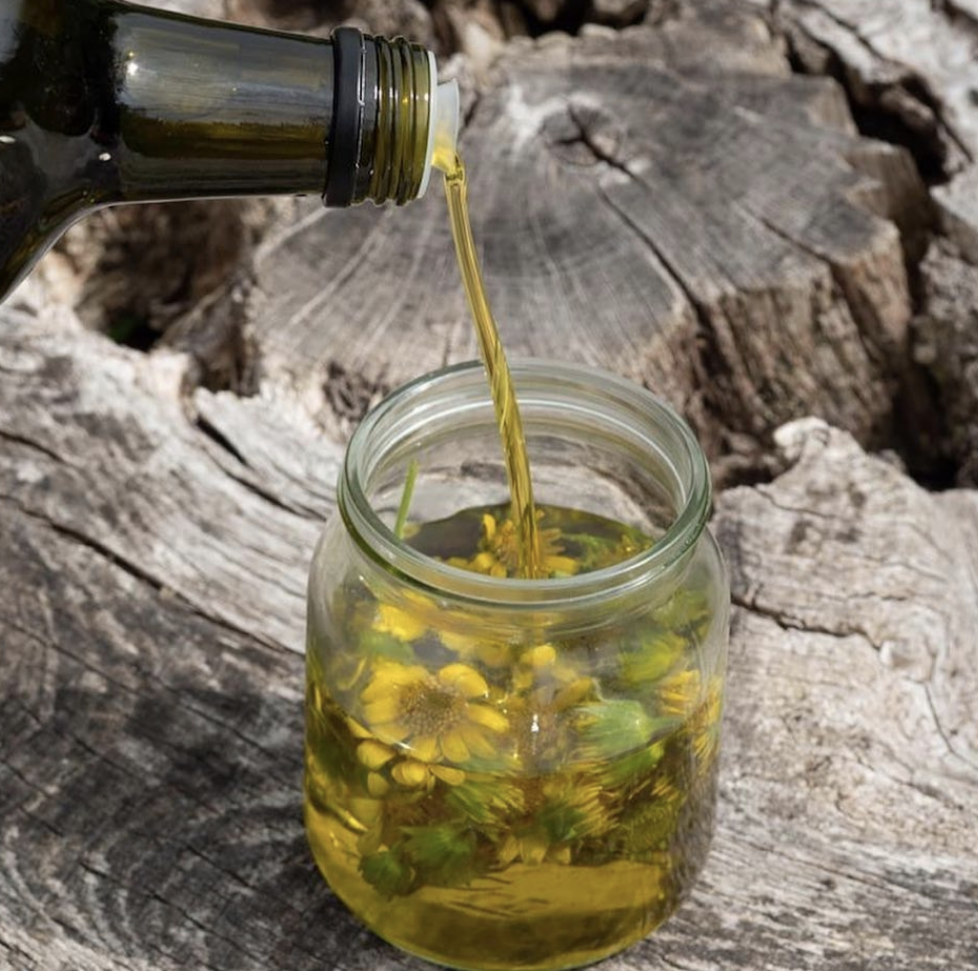
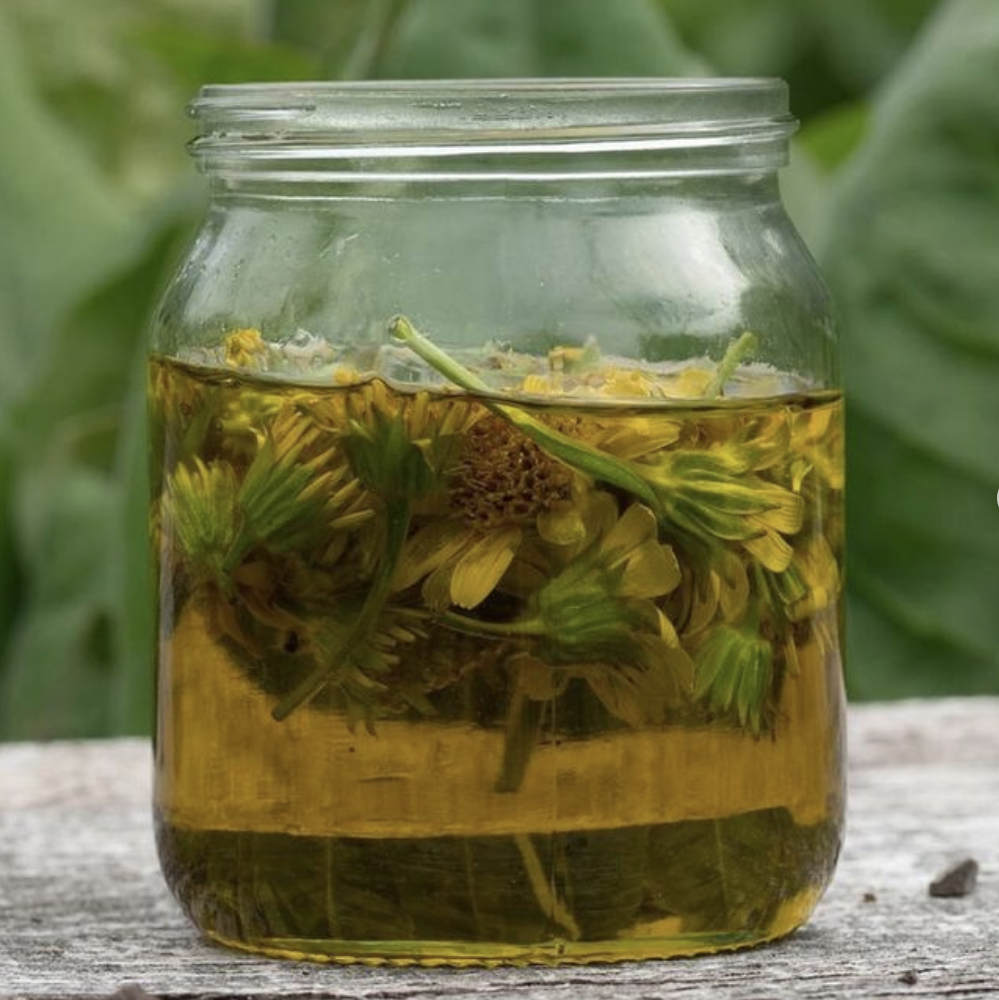
Herbalist’s Notes – Should I use the whole flower or just the petals?
- Arnica: Use whole flower heads (petals, sepals, and receptacle).
- St John’s Wort: Use the flowering tops — flowers plus the upper 5–10 cm of leafy stem.
- Calendula: Use petals only for the clearest, most potent oil.
- If using fresh material, harvest on a dry day and allow any surface moisture to evaporate. Remove insects or browned petals before infusing.







